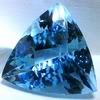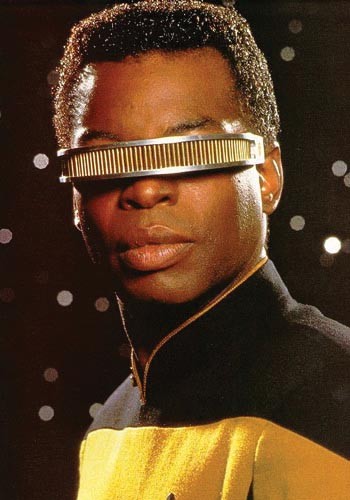 |
KWSN Orbiting Fortress
KWSN Distributed Computing Teams forum
|
| View previous topic :: View next topic |
| Author |
Message |
Duke of Buckingham [TeaM]
Prince

Joined: 11 Jun 2011
Posts: 670
Location: Lisboa
|
 Posted: Sun May 13, 2012 4:08 pm Post subject: Science News Posted: Sun May 13, 2012 4:08 pm Post subject: Science News |
 |
|
Retinal implants could restore partial vision
In lab tests on rat retinas, a photovoltaic chip helps display images through special goggles
By Rachel Ehrenberg
Web edition : 4:09 pm
Specialized goggles that send information to solar cell–like chips implanted in the eyes may one day help some blind people seeThe new implants, which have been tested in rat retinas in a dish, would require less invasive surgery than similar devices now being tested and offer a higher-resolution view of the world.
The new system, reported online May 13 in Nature Photonics, still needs work before being tested in people. But one day it may return partial sight to people suffering from conditions such as retinitis pigmentosa, an inherited disease that can lead to night blindness and tunnel vision, or macular degeneration, in which sharp central vision is lost but peripheral vision remains.
In those conditions, vision suffers when light-detecting cells at the back of the inner eye are damaged, even though the nerve cells that send visual information to the brain may remain intact.
No current treatments can restore vision for such retinal damage, says Lotfi Merabet, an eye specialist at Massachusetts Eye and Ear in Boston. The new work “is certainly very promising,” he says.
Developing the implants took many years and many scientists, says study coauthor James Loudin, an electrical engineer at Stanford University. “The sheer number of new technologies that had to be developed — it’s amazing,” he says.
For starters, there are the goggles. A miniature video camera sits on the nosepiece, watching the world. Information from the camera streams to a portable computer about the size of a smartphone. This computer processes the video images, which are projected into the eyes by near-infrared lasers on the insides of the goggle lenses. The laser hits slender photovoltaic chips implanted beneath the retinas, which convert the light into electrical current, stimulating nerve cells that send information to the brain.
Other labs have also designed retinal prostheses; one has been approved for use in Europe, and another is in clinical trials. But these systems transmit information and power via coils and wiring that have to be surgically implanted along with the retinal chip. Most of the hardware for the new prosthetics is in the goggles, so only the thin solar cell–like chip needs to be implanted. And because the new chip has three photodiodes per pixel rather than one, the image resolution should be better than that of other devices.
The team was concerned that the laser light, which is far brighter than the light that working eyes see on a sunny day, would generate potentially damaging heat, says Loudin. But tests show that the heat is one-hundredth of the established ocular safety limit.
With that issue resolved, the researchers are now testing the system on living rats.
http://www.sciencenews.org/view/download/id/340649/name/BIONIC_EYE
A system being tested in rats may partially restore sight for some blind people. A handheld computer processes images from a video camera that sits on specialized goggles. Lasers inside the goggles send that information to photovoltaic chips implanted in the eye, stimulating nerve cells that send information to the brain. The person then perceives the images seen by the camera. Credit: James Loudin/Nature Photonics
_________________
Friends are like diamonds and diamonds are forever.
Together we stand - Divided we fall. |
|
| Back to top |
|
 |
Gemjunkie
Prince


Joined: 03 Jul 2010
Posts: 3519
Location: Earth, lately
|
 Posted: Sun May 13, 2012 9:49 pm Post subject: Posted: Sun May 13, 2012 9:49 pm Post subject: |
 |
|

_________________



(older, before split CPID)
 |
|
| Back to top |
|
 |
Duke of Buckingham [TeaM]
Prince

Joined: 11 Jun 2011
Posts: 670
Location: Lisboa
|
 Posted: Wed May 16, 2012 1:54 pm Post subject: Posted: Wed May 16, 2012 1:54 pm Post subject: |
 |
|
At ISEF, fusion is hot
South Carolina teen makes finals with directed neutron source
By Devin Powell
Web edition : 10:34 am
PITTSBURGH — Ben Bartlett, a 17-year-old from Lexington, S.C., built a portable nuclear fusion reactor in his parents’ house and earned himself a trip to Pittsburgh where he has a chance to take home one of the top awards later this week at the world’s largest precollege science fair.
Nevadan Taylor Wilson won last year’s Intel International Science and Engineering Fair for a similar reactor that detected radioactive materials by spraying out subatomic particles called neutrons. Bartlett’s project goes a step further by training the neutrons to move in one direction. That directionality could be useful for fashioning intense neutron beams used in treating some kinds of advanced cancers.
“One of the reasons why neutron therapy is only administered in a few locations is because it’s so hard to get the necessary concentration of neutrons in beams. The method of directionalization I’ve come up with … should have widespread applications in neutron therapy or any application requiring a high neutron flux,” says Bartlett, a junior at Lexington High School.
At this year’s fair, Bartlett and more than 1,500 other students are vying for over $3 million in awards, including a top award of $75,000 to be announced on May 18. The annual event is sponsored by the Intel Foundation and administered by the Society for Science & the Public, which publishes Science News.
Bartlett is not the first person to achieve fusion. He’s the 34th outside government and industry, he says. Neither is he the youngest. That record belongs to Wilson, who built his reactor at age 14. Would-be “fusioneers” — such as Mike Kovalchick of York, Pa., another competitor at the science fair — often start with plans posted online by the Open Source Fusor Research Consortium.
At the heart of Bartlett’s $2,800 machine, a long shiny windowed tube that emits a pink glow when switched on, is a suspended ball of deuterium plasma. Deuterium gas injected into the chamber and stripped of its electrons crashes into the plasma. Colliding particles don’t have enough energy to overcome their natural repulsion, but a quantum mechanical effect called tunneling kicks in and allows them to sometimes fuse into helium, spitting out neutrons in the process.
“Neutrons typically come out in all directions,” says Brenden Heidrich, a nuclear reactor physicist at Penn State. Guiding the particles in a single direction “would be very difficult to do,” he says, because neutrons are neutral — and thus ignore electromagnetic fields that can guide charged particles such as protons or electrons.
Forming a beam typically means using shielding to block most of the radiating particles. A small hole in the shielding allows only particles moving in the right direction to escape.
In search of a more efficient process, Bartlett figured out how to make neutrons that tend to travel in the right direction to begin with. A 140,000-volt difference from one end of the device to the other creates electric fields that change the speeds of the charged gas particles circulating within. Those moving toward the front of the tube accelerate, while those moving toward the back slow down.
That speed difference shapes the pattern of neutrons that emerges after collisions. Bartlett’s calculations suggest that about twice as many neutrons should emerge from the front of his device as from the back. Theoretically, stronger fields that can create a larger speed difference could send all of the neutrons toward a single point, in true beamlike fashion.
Vials of neutron-detecting fluid arrayed around the device bubbled in a pattern consistent with the math. To prove that that his device really works, though, the budding scientist will need to make some quantitative measurements, says Ronald Rogge, a physicist who works with neutrons at the National Research Council Canada’s Chalk River Laboratories in Ontario.
“People have suggested they could get this kind of direction preference before,” but such effects tend to be very small, says Rogge.
http://www.sciencenews.org/view/download/id/340725/name/LEARNING_FUSION
Ben Bartlett discusses his tabletop fusion project at the 2012 Intel International Science & Engineering Fair in Pittsburgh. Credit: Devin Powell
_________________
Friends are like diamonds and diamonds are forever.
Together we stand - Divided we fall. |
|
| Back to top |
|
 |
|
|
You cannot post new topics in this forum
You cannot reply to topics in this forum
You cannot edit your posts in this forum
You cannot delete your posts in this forum
You cannot vote in polls in this forum
|
|











